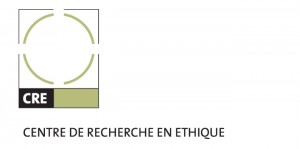Luc Bovens : Dutch Book, asymétrie d’information et implications normatives
La chaire en éthique des affaires est heureuse de recevoir Luc Bovens, professeur de philosophie à la London School of Economics et éditeur du magazine Economics and Philosophy. Il viendra présenter une conférence sur différents arguments du Dutch Book et les possibilités qu’ils offrent pour tirer profit des asymétries d’information lors de la distribution de ressources limitées dans un groupe. Ce genre d’argument a une structure similaire à la tragédie des biens communs (classe de phénomène économique décrivant les problèmes d’action collective qui surviennent lors de la distribution de biens communs limités en société) et les problèmes de vote stratégique dans un juré.
Dutch Books, Group Decision-Making, the Tragedy of the Commons and Strategic Jury Voting
Distribute white and black hats in a dark room to a group of three rational players with each player having a fifty-fifty chance of receiving a hat of one colour or the other. Clearly, the chance that, as a result of this distribution,
(A) «Not all hats are of the same colour»
is 3/4. The light is switched on and all players can see the hats of the other persons, but not the colour of their own hats. Then no matter what combination of hats was assigned, at least one player will see two hats of the same colour. For her the chance that not all hats are of the same colour strictly depends on the colour of her own hat and hence equals 1/2.
On Lewis’s principal principle, a rational player will let her degrees of belief be determined by these chances. So before the light is switched on, all players will assign degree of belief of 3/4 to (A) and after the light is turned on, at least one player will assign degree of belief of 1/2 to (A). Suppose a bookie offers to sell a single bet on (A) with stakes $4 at a price of $3 before the light is turned on and subsequently offers to buy a single bet on (A) with stakes $4 at a price of $2 after the light is turned on. If, following Ramsey, the degree of belief equals the betting rate at which the player is willing to buy and to sell a bet on a given proposition, then any of the players would be willing to buy the first bet and at least one player would be willing to sell the second bet. Whether all hats are of the same colour or not, the bookie can make a Dutch book – she has a guaranteed profit of $1.
However, it can be shown that a rational player whose degree of belief in (A) equals 1/2 would not volunteer to sell the second bet on (A), neither when her aim is to maximise her own payoffs, nor when she wants to maximise the payoffs of the group. The argument to this effect shares a common structure with models (i) for the tragedy of the commons and (ii) for strategic voting in juries.
où et quand ?
Conférence : Jeudi le 25 avril de 13:30 à 15:30
Salle banque CIBC
HEC Montréal
Nous nous déplacerons ensuite au CRÉUM pour une rencontre plus informelle qui débutera à 16:30. Luc Bovens présentera un texte sur la consitance et la cohérence du sentiment amoureux intitulée Love’s Constancy and Neil Jordan’s The Crying Game (on peut télécharger le texte au bas de cette page). C’est une bonne occasion pour les étudiants ou pour ceux qui voudraient approfondir la discussion de venir le rencontrer.
Rencontre : 16:30 au CRÉUM
Salle de séminaire (309)
2910, Boul. Édouard-Montpetit, 3ème étage
organisateurs
L’évènement est organisé en collaboration avec la Chaire de management éthique des HEC Montréal.



